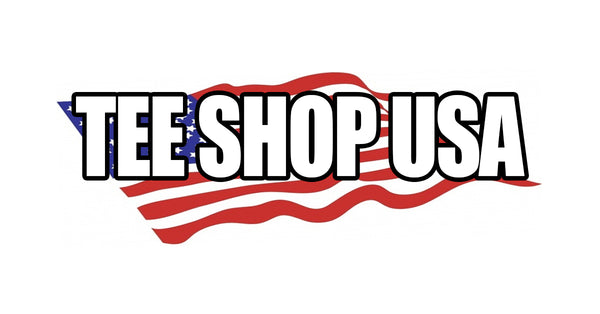Are you a t-shirt enthusiast? Do you have a closet overflowing with graphic tees, vintage finds, and concert memorabilia? If so, you're in good company! T-shirts are a staple in everyone's wardrobe, but for some (like us), they are a way of life.
Join us as we navigate the waters of history and bring you the story of the humble t-shirt. We'll talk about the origins, who invented the t-shirt and when, and how they became culturally significant pieces of apparel today.
Let's dive into the fascinating evolution of this wardrobe staple!
Early Beginnings

The t-shirt can trace its origins back to the late 19th century when it was used as an undergarment for laborers in the United States Navy. These early versions were made of lightweight cotton and had short sleeves, providing a comfortable and breathable option for men working in hot climates.
The modern t-shirt, as we know it today, was invented in the early 20th century. In 1904, the Cooper Underwear Company created a new lightweight undergarment for bachelors to wear without a top. This new design was dubbed the "bachelor undershirt," which later evolved into the t-shirt.
During World War II, the t-shirt gained popularity as a comfortable and easy-to-clean garment for soldiers. It was also during this time that the t-shirt started to be worn as an outer garment rather than just an undergarment.
Pop Culture Icon

In the early 20th century, the t-shirt started to gain popularity beyond its role as an undergarment. It became a symbol of rebellion when Marlon Brando famously wore one in the 1951 film A Streetcar Named Desire. This marked a shift in the perception of t-shirts from an undergarment to a fashion statement.
Brando's choice to wear a plain white t-shirt on screen was revolutionary, as it represented a departure from the formal and structured clothing typically seen in films. The t-shirt became a symbol of authenticity and individuality, inspiring a new wave of fashion trends.
While the exact t-shirt worn by Marlon Brando in "A Streetcar Named Desire" may be hard to come by, many fashion brands have created their own versions inspired by his iconic style. Look for high-quality, plain white t-shirts with a comfortable fit to capture the essence of Brando's legendary look.
Embrace the spirit of rebellion and individuality with the timeless Marlon Brando t-shirt. Pay homage to a Hollywood legend and make a bold fashion statement with this iconic piece of clothing.
Graphic Tees and Personal Expression

By the 1960s, the t-shirt had evolved into a canvas for personal expression. The rise of screen printing technology allowed for intricate designs and graphics to be printed on t-shirts, giving individuals a way to showcase their interests, beliefs, and affiliations.
Today, screen printing continues to be a versatile and widely used printing technique across various industries. From apparel and signage to electronics and industrial applications, screen printing remains a popular choice for its durability, versatility, and ability to produce high-quality prints with vibrant colors.
As technology continues to advance, new innovations in screen printing have emerged, such as digital screen printing and UV-curable inks, further expanding the possibilities of this age-old printing method.
Screen printing has come a long way since its humble beginnings in ancient China, evolving into a sophisticated and indispensable printing technique used around the world. Its rich history and enduring popularity are a testament to the enduring legacy of this timeless art form.
From Counterculture to Mainstream

Throughout the 1970s and 1980s, the t-shirt continued to be a symbol of counterculture movements (like hippies), with bands, artists, and activists using it as a platform for their messages. However, by the 1990s, the t-shirt had firmly cemented its place in mainstream fashion, becoming a wardrobe staple for people of all ages and backgrounds.
In recent years, there has been a growing emphasis on sustainability in the fashion industry, leading to an increased demand for eco-friendly clothing options. T-shirts made from organic cotton, recycled materials, and other sustainable fabrics have become increasingly popular, reflecting a shift towards more environmentally conscious consumer choices.
From its humble beginnings as an undergarment for sailors to its current status as a versatile fashion staple, the t-shirt has certainly come a long way. Its evolution reflects changes in society, culture, and technology, making it a fascinating piece of clothing with a rich history.
Thanks for stopping by! Before you go, check out our premium line of Graphic Tees.


